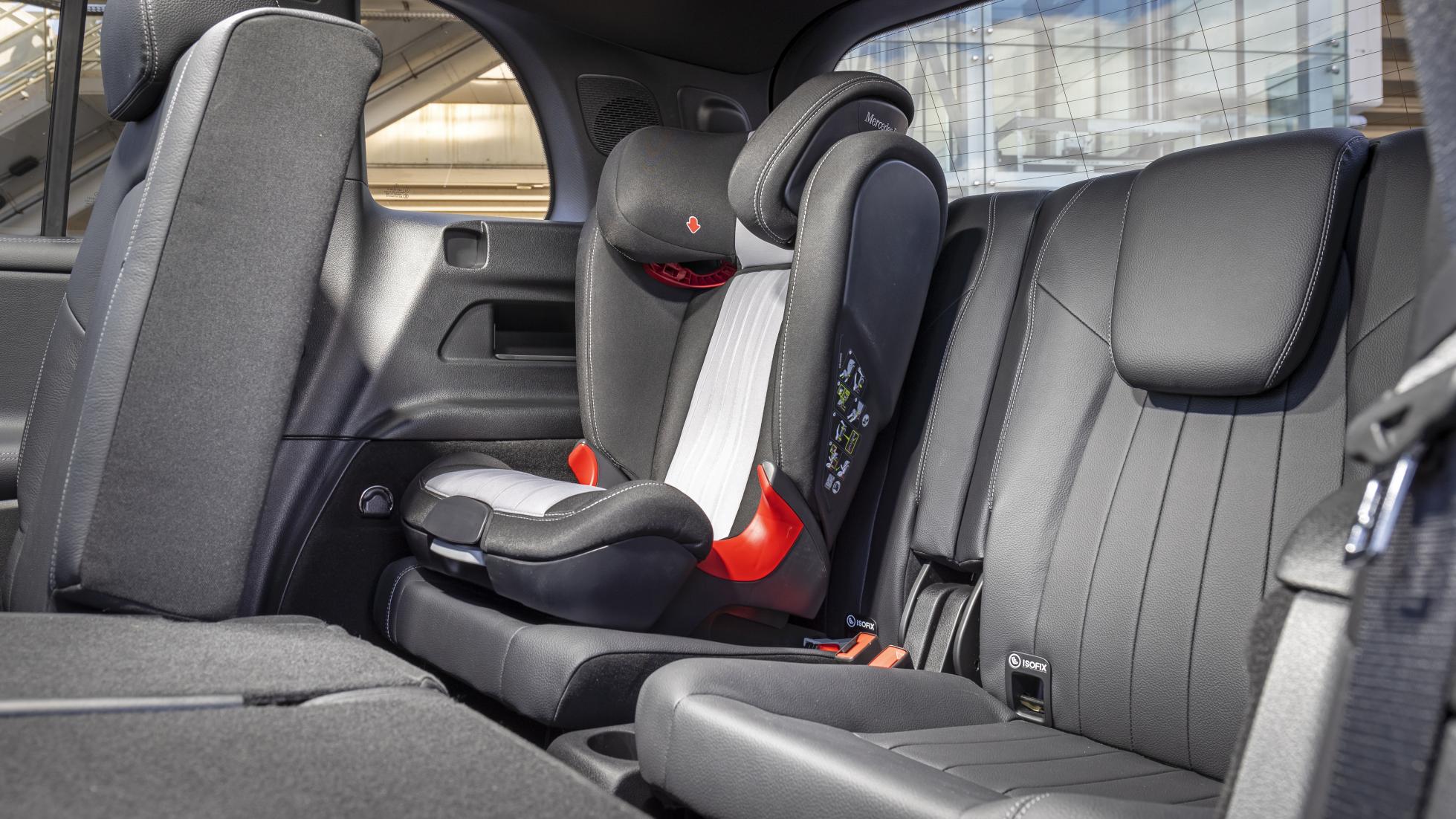Mercedes GLB review: seven-seat Disco Sport rival tested
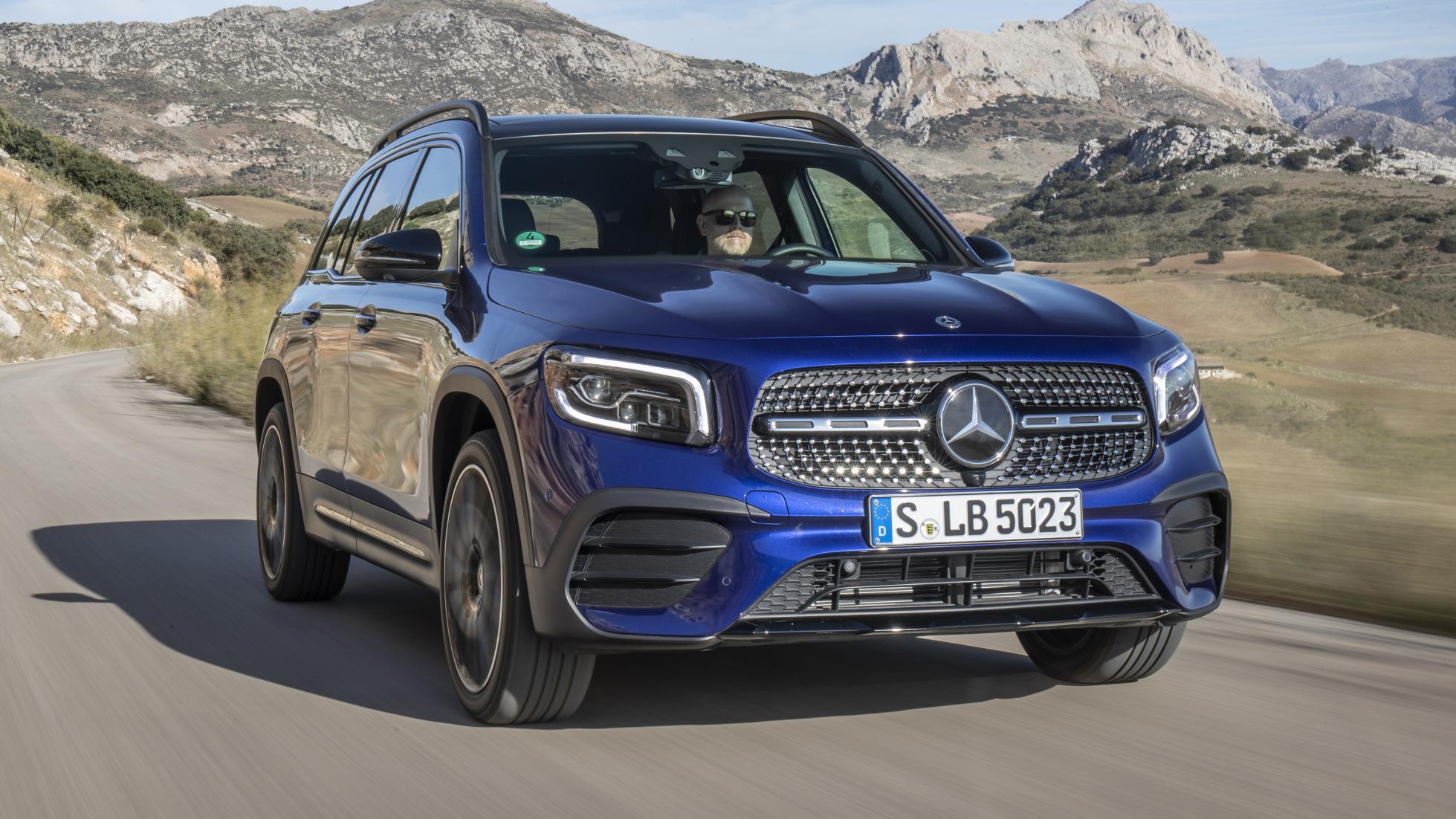
OVERVIEW - What is it?
The seventh, yes seventh, car Mercedes has managed to spin-off its flexible ‘compact car platform’ since 2018. There’s already the A-Class hatchback, A-Class Saloon in either normal- or long-wheelbase form, B-Class mini-MPV, CLA four-door coupe and CLA Shooting Brake estate thing - and now there’s this.
Bridging the gap between the GLA (which, when it’s replaced very soon, will be the eighth car on this new platform) and C-Class-based GLC, the GLB is 215mm longer, 38mm wider and 101mm taller than a B-Class, giving corresponding increases in leg- and head-room and luggage space. It also gives enough space for two small seats that flip-up from the boot floor, which Mercedes says can ‘comfortably’ accommodate people up to 5ft 6in tall. Hmmm.
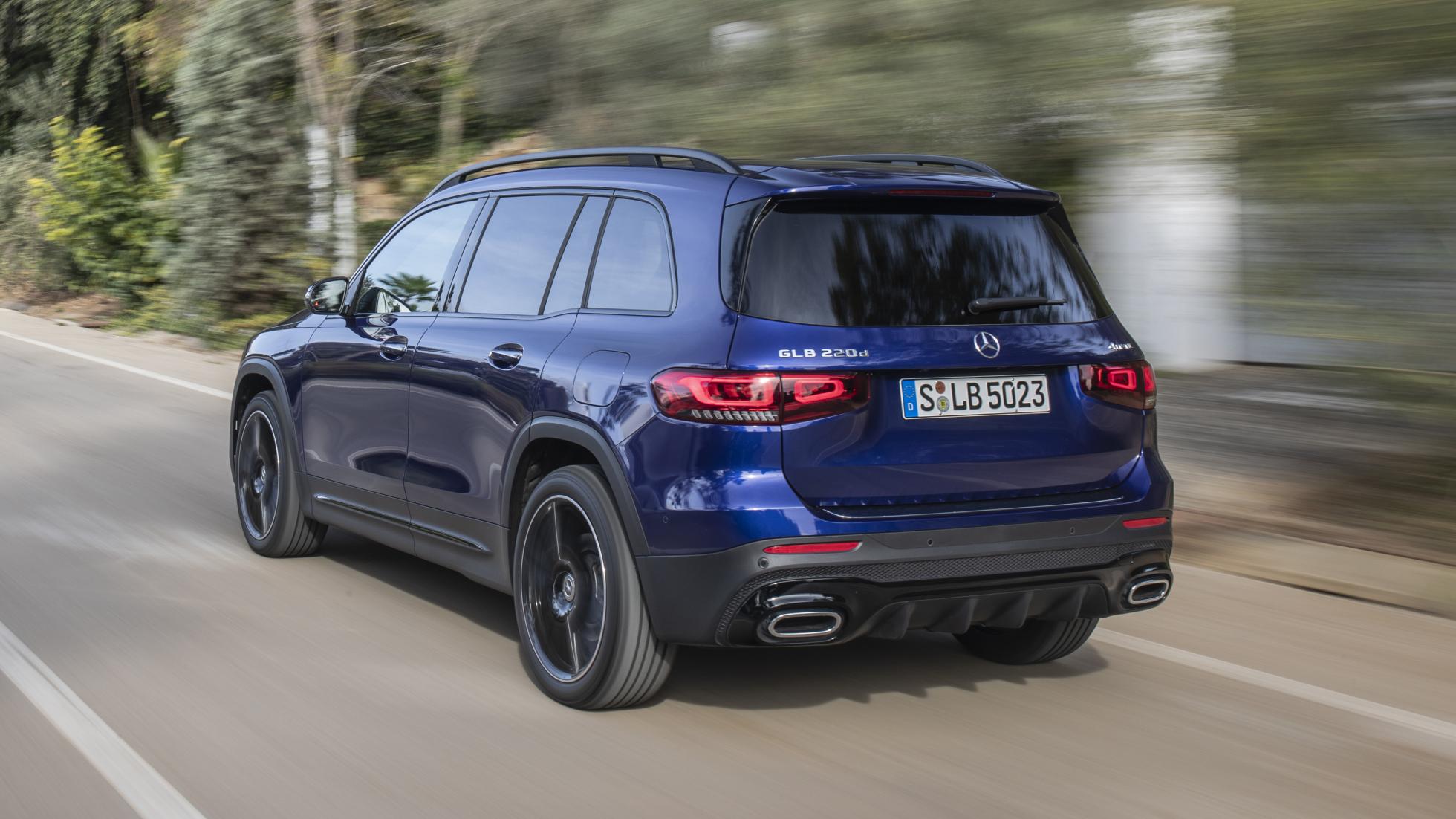
The GLB is Mercedes’ biggest ‘compact’ car yet, and thanks to the ever-increasing popularity of SUVs and crossovers, no doubt destined to become one of its best-selling.
It’s shorter than a VW Tiguan Allspace or Nissan X-Trail, but longer than a Land Rover Discovery Sport. Not as tall as any of those cars, but about as wide as the VW and Nissan, and a fair bit narrower than the Land Rover. Prices start at £34,200 and rise to almost £50,000, and the vast majority of GLBs in the UK will be tarty AMG Line spec (much like the car pictured). Sales have already started, and first deliveries are expected in December.
Of course it gets all the same engines as the A-Class, B-Class and so-on. You can have a 1.3-litre four-cylinder petrol in the GLB200, or a 2.0-litre diesel as either a GLB200d or 220d. The GLB220d gets standard 4Matic all-wheel drive (it’s an option on the 200d). There is an off-road pack that adds an extra drive mode. But while the GLB will get you farther off-road than you might expect, the Disco Sport is still king of that particular hill.
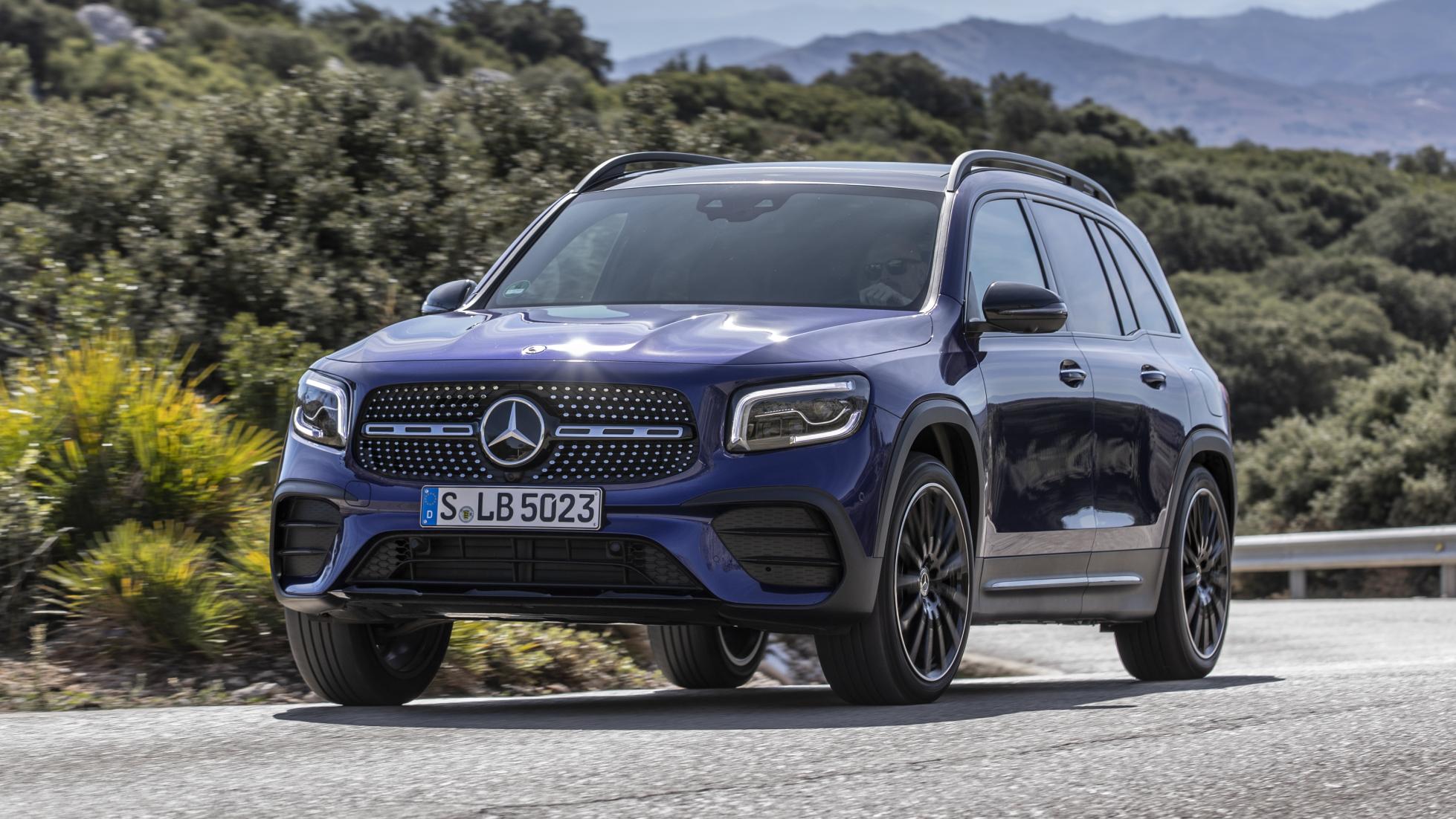
All engines get an eight-speed dual-clutch automatic bar the GLB200, which uses the old seven-speed. And yes, of course there’s an AMG one - the GLB35 does 0-100kph in a shade over five seconds (thanks to actual launch control) and yep, does indeed get all seven seats (the flagship diesel gets the option of five for some reason). Prices for the AMG haven’t been released, but sales of the 35 start in December, with the first deliveries expected early next year.
The dashboard is pretty much the same one you get in the A-Class, B-Class et cetera too, with twin screens (size depends on spec) in place of a conventional instrument binnacle, the MBUX infotainment system and “Hey Mercedes” voice assistant.
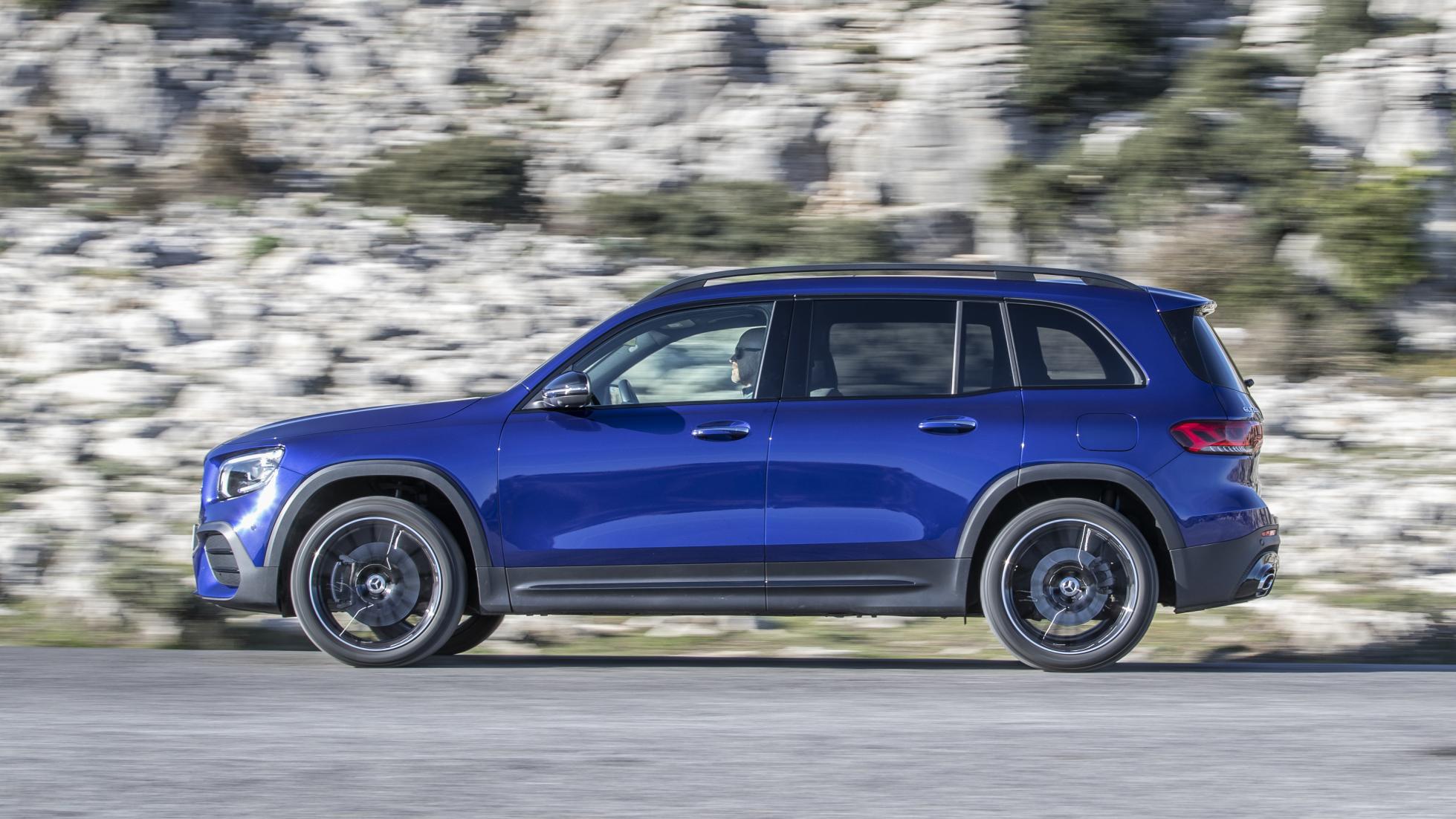
DRIVING - What is it like on the road?
The GLB Brits will buy is the 220d with 4Matic all-wheel drive. Which is a good thing, because it’s by far the best of the normal GLBs. It’s got a good engine – the 2.0-litre diesel is quiet if you don’t clog it, transmits no nasty vibrations through the bulkhead, pedals or steering wheel, and delivers its 187bhp in smooth, linear fashion. Plenty fast enough – 0-100kph takes 7.6 seconds and the top speed is 217kph.
A good mate for the eight-speed dual-clutch auto, too, which is smoother, quicker-shifting and more cleverly calibrated than the old seven-speed still used by the petrol-engined, front-wheel drive GLB200 and many A-Classes. It’s more than happy to make use of the 400Nm offered up from just 1,600rpm.
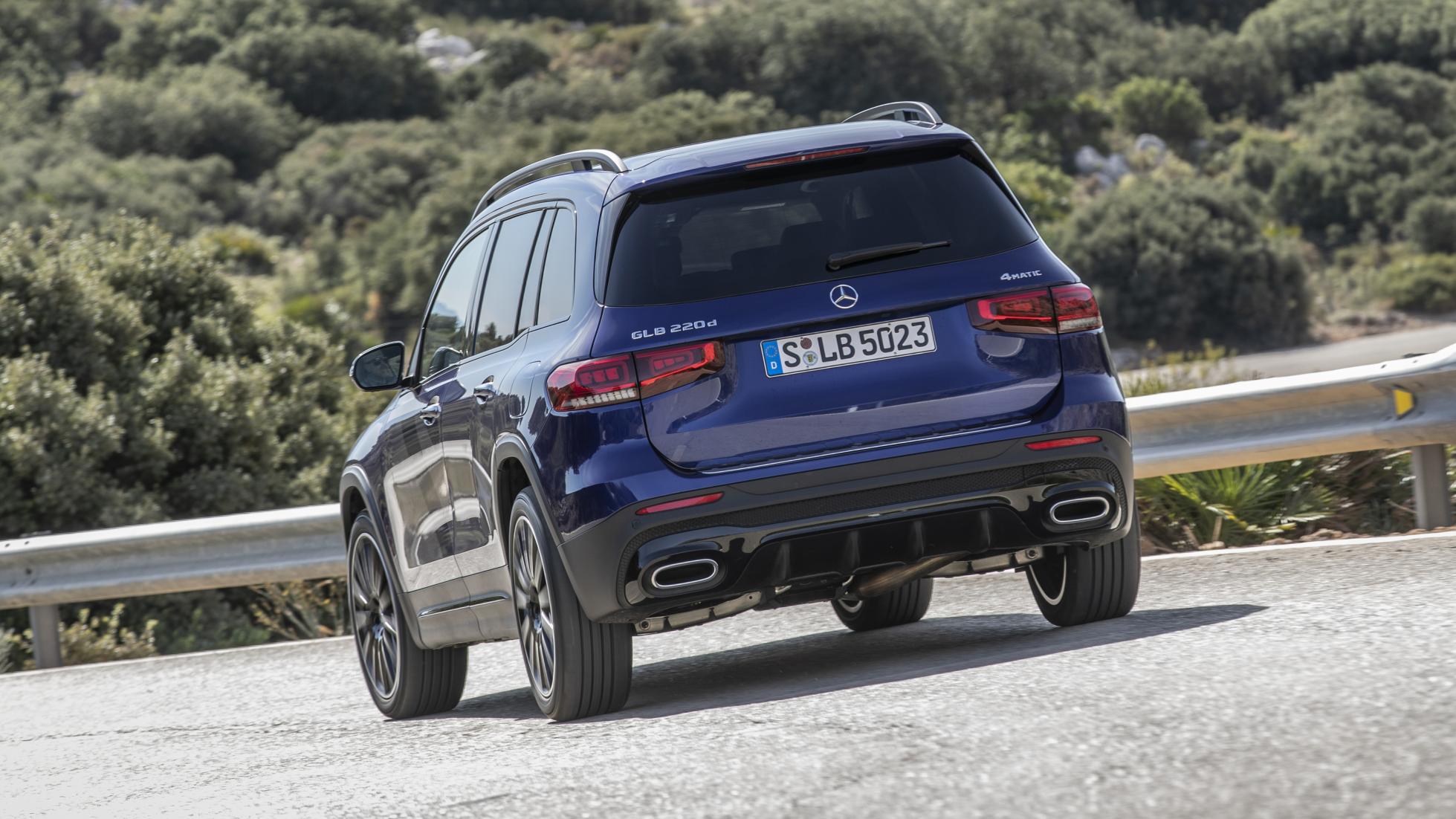
Driving the GLB smoothly is easy thanks to progressive, consistently weighted steering and pedals, which encourage a relaxed driving style and ought to keep your passengers happy. We’d love to say it rides well too – the one we tried certainly felt pretty supple and had good body control – but it was fitted with adaptive dampers that in the UK will be optional only on the GLB35. So we can’t pass judgement on outright comfort just yet. Tyre-roar is minimal, even with big wheels fitted, but there is a bit of buffeting from around the sizable door mirrors.
The 200d uses the same four-cylinder diesel engine as the 220d, just with 40 fewer horsepower. It can accelerate from 0-100kph in 9 seconds and has a top speed of 204kph (or 9.3 seconds and 201ph if you choose all-wheel drive).
We’ve not tried it – but assuming it offers the same level of refinement as the 220d, you could probably save some money and go for the less powerful car. A family bus like the GLB doesn’t need to be quite so fast as the 220d.
And what of the GLB200? It’s worth thinking about if you spend a lot of time driving in town. Performance is acceptable – about the same as the GLB200d (0-100kph in 9 seconds or so) – but load it up with people/things and it may struggle as it only has 249Nm of torque to the 200d’s 320Nm and 220d’s 400Nm. The 1.3-litre motor, shared with Renault/Nissan, gives 161bhp. Largely quiet but a bit thrashy at high-revs. The seven-speed auto feels better here than it does in the A- or B-Class, but it remains inferior to the eight.
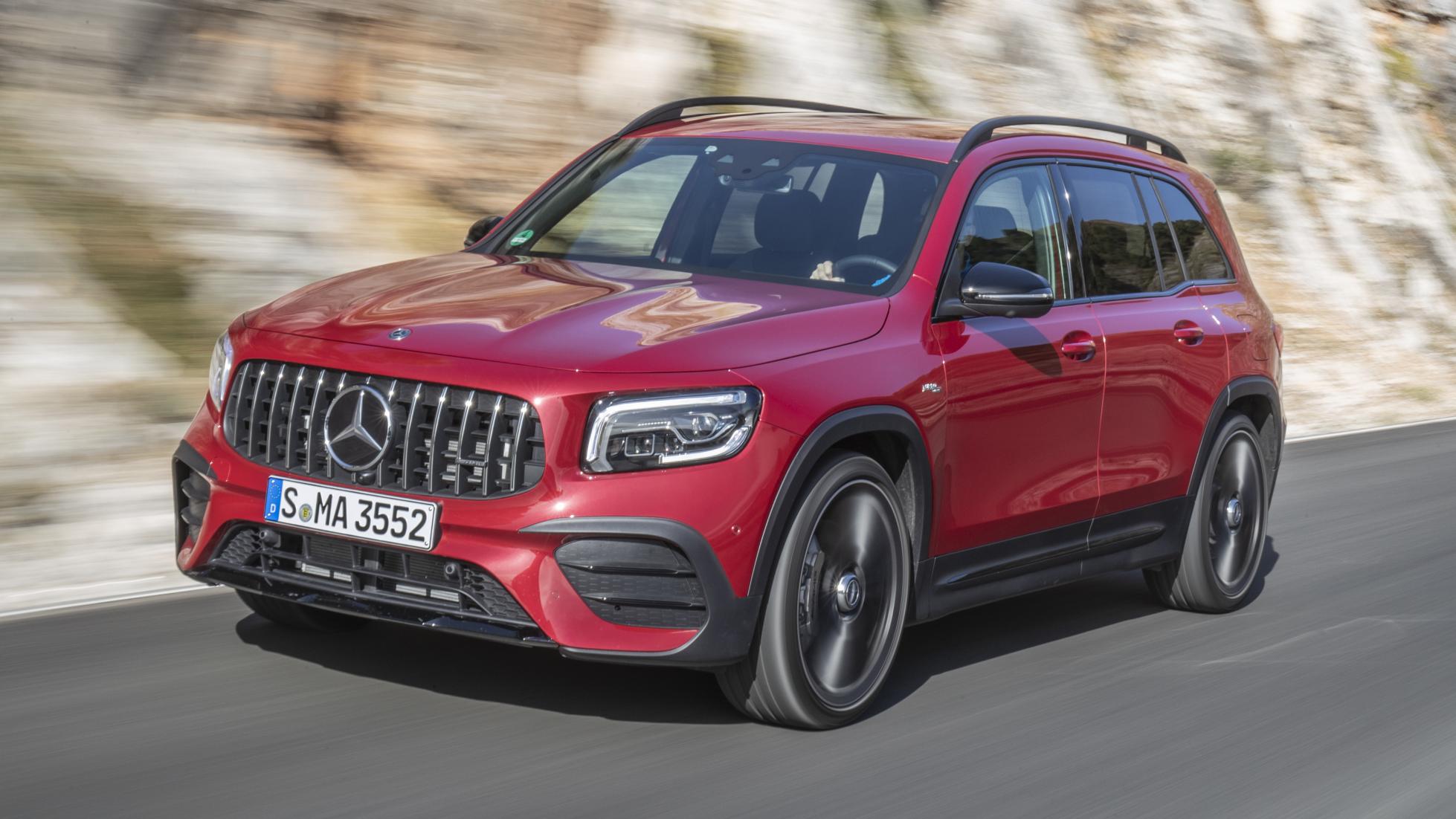
The GLB35, meanwhile (pictured in red), is a curious item. It shares an engine with the A35 hot hatch, but added size and therefore weight means it’s a little slower. ‘Only’ 5.2 seconds to 100kph, which, trust us, feels plenty fast enough. It’s an effective engine, this 302bhp 2.0-litre turbo, but not an especially exciting one. The exhaust note is droney, and the power delivery a bit flat.
Where the GLB35 moves ahead of the A-Class is with the transmission – as it too gets the new eight-speed rather than the old seven. In manual mode it’s great – quick-shifting up and down the ‘box as required – but leave it to its own devices and it does some odd things.
The 35 is obviously firm – the adaptive dampers’ stiffer modes could prove too much for the UK – but controls its heft well, rolls progressively and isn’t all that uncomfortable. This is a safe, secure-feeling car that majors on grip – something it has vast reserves of – but lacks nuance. It’s all a bit one-dimensional, as evidenced by the fact even if you turn the ESP all the way off, the car still cuts power long before you get anywhere near the limit. Not that any owners should or indeed will care. Cross-country it’s still rather rapid.
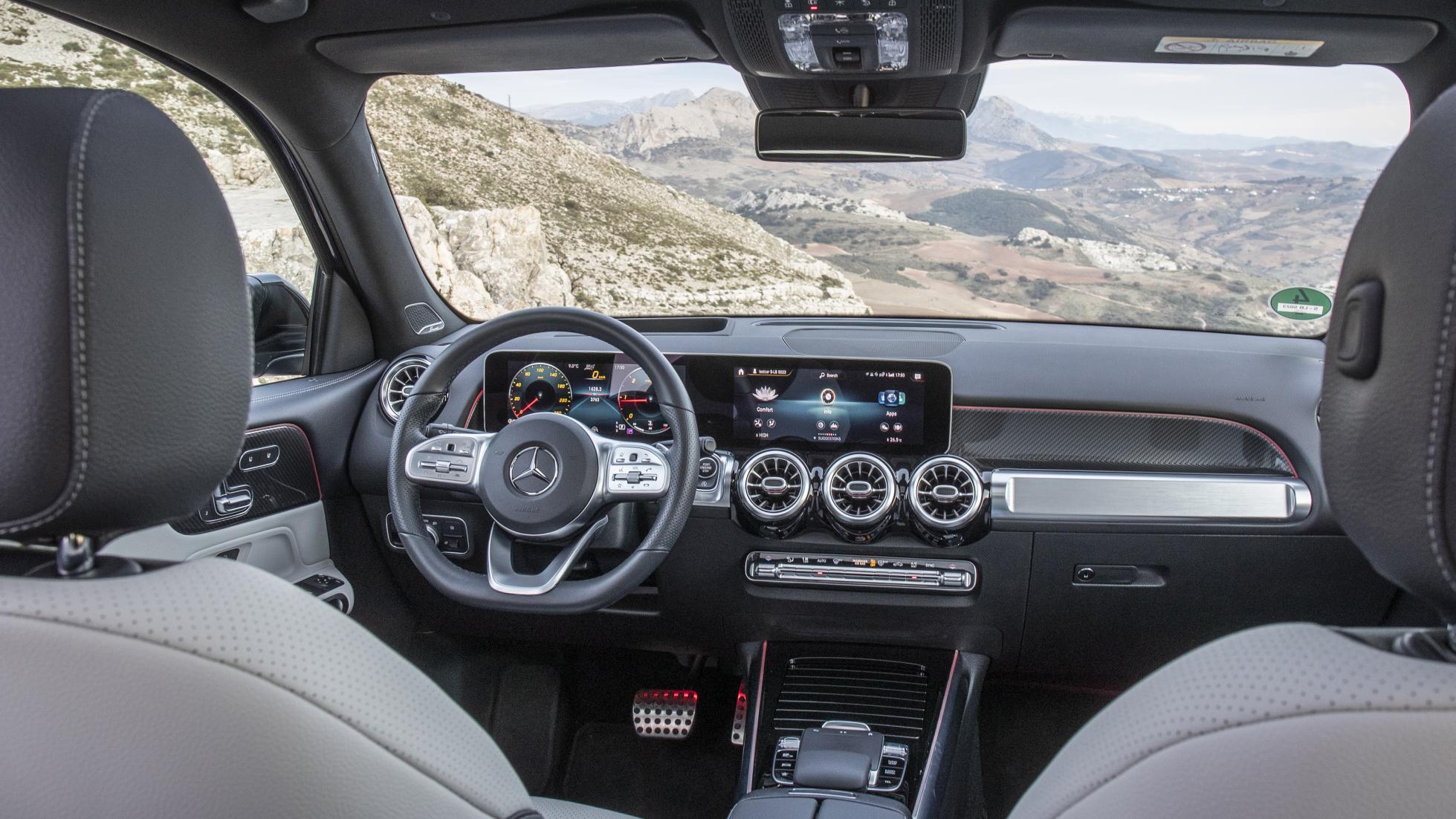
ON THE INSIDE - Layout, finish and space
In the front the GLB is basically the same as Merc’s other ‘compact’ cars. Base Sport spec gets twin 7-inch screens, but AMG Line cars upgrade to dual 10-inch widescreens mounted side-by-side behind one piece of glass – one directly ahead of the driver giving speed, revs, nav and so-on. An impressive-looking setup, with no conventional binnacle. The highly configurable driver’s screen is controlled by a touchpad on the steering wheel, which frustratingly doesn’t always register your swipes and prods first time around. No matter – you’ll set it once and leave it.
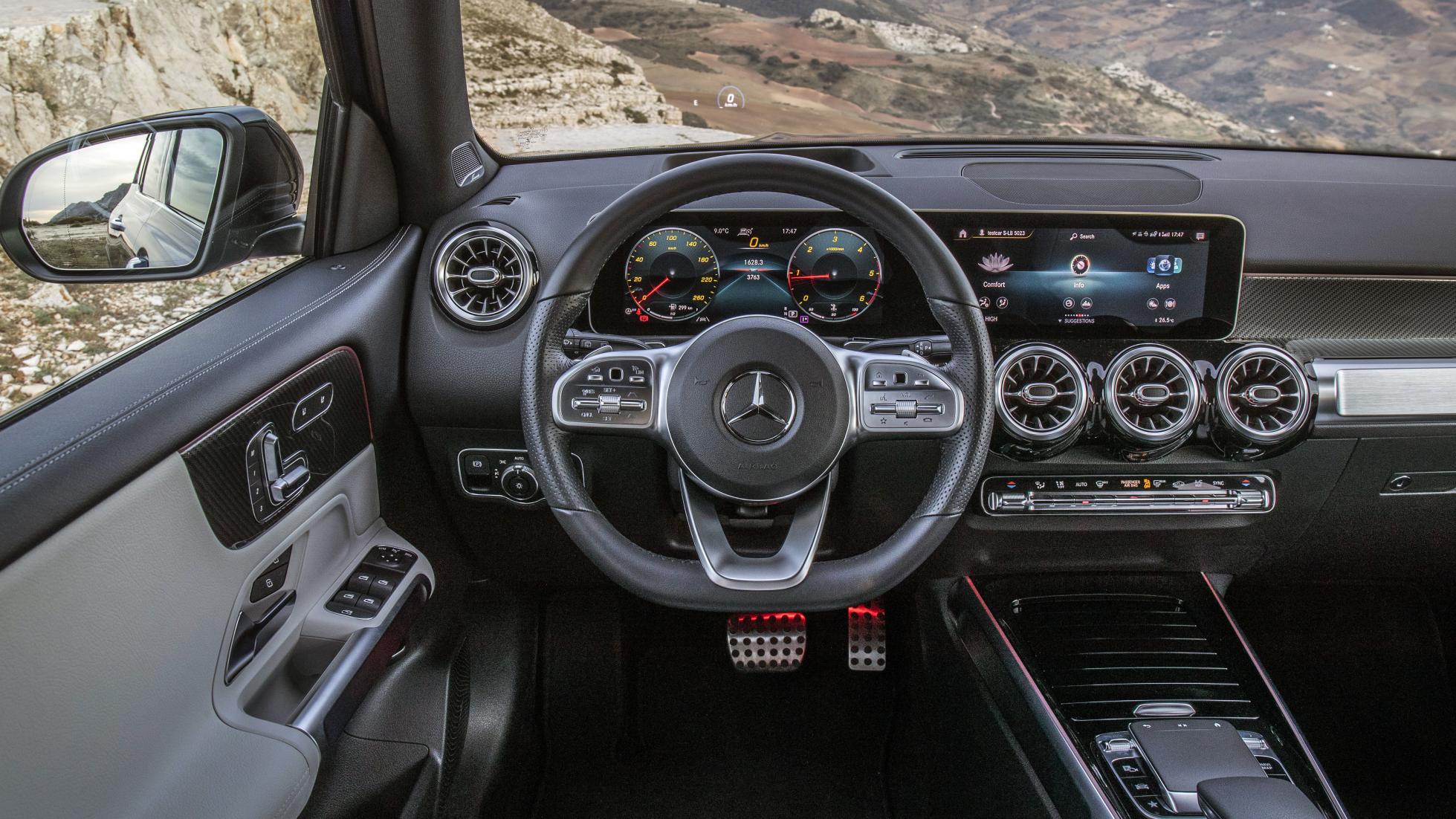
The centre screen’s MBUX UI takes some learning, but is broadly quite user-friendly and has smart, crisp graphics. You can either touch the screen itself (our preferred method), use a second touchpad on the other side of the steering wheel, a laptop-style trackpad on the centre console or the mostly intelligent “Hey Mercedes” voice assistant.
Under the screen is a trio of air vents with a shiny black plastic surround, then a row of climate controls. Looks great – properly impressive – but doesn’t feel all that expensive to the touch. The top of the dashboard is nice and solid, but lower down, around the glovebox for example, the plastics get a bit cheap and scratchy.
The backs of the front seats are made from what feels like the same material – looks a bit odd, but makes sense given all it has to do is withstand your kids’ kicks.
The second row of seats can be slid forwards by 90mm or backwards by 50mm from their standard position, and the backrests can be adjusted through eight stages. With it slid all the way forwards the second row is really only suitable for kids, but with it slid all the way back even adults over 6ft ought to be pretty happy.
The third row is obviously just for kids, however. There are even ISOFIX points should you want to stick really small children back there (not that we’d recommend doing so). Stowing, erecting and accessing the two rearmost seats is easy enough – it’s entirely possible to do it one-handed. There’s a special compartment in the boot floor to store the parcel shelf when it’s not in use.
The second and third rows both have USB-C ports, so make sure your devices are compatible or you’ve got a handful of adapters at the ready. And there’s loads of light from the big windows and low belt-line.
In terms of outright space, the seven-seat GLB has 1,680 litres of cargo space with all the seats folded flat, the Disco Sport has 1,451 litres, while the Skoda Kodiaq manages over 2,000 litres.
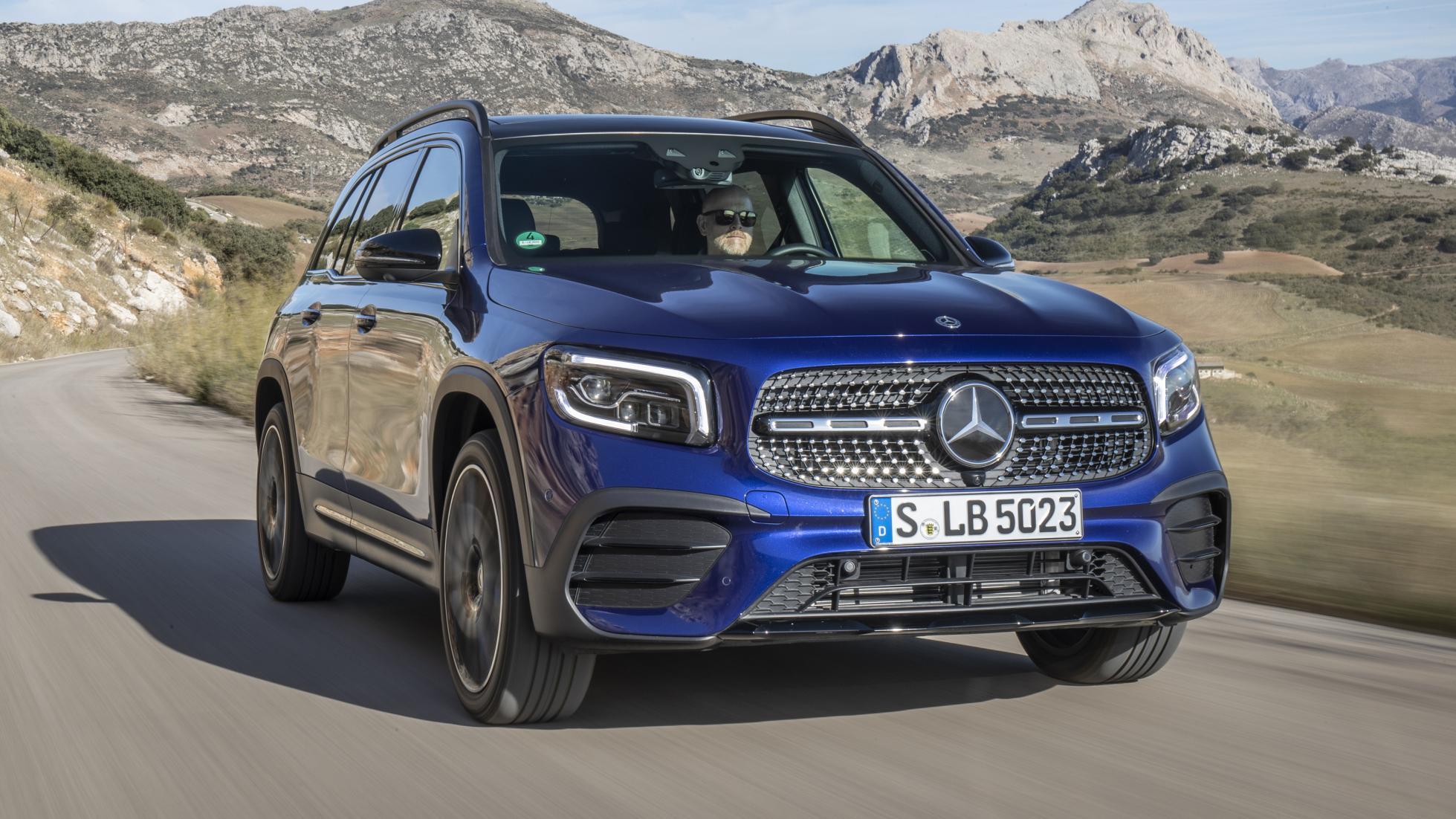
OWNING - Running costs and reliability
Prices start at £34,200 for the petrol-engined GLB200 in entry-level Sport trim, which buys you 18-inch alloy wheels, dual-zone climate control, heated front seats, a reversing camera and twin 7-inch screens. The GLB200 is actually the only engine where you get a choice of all four trims: Sport, AMG Line, AMG Line Premium and AMG Line Premium Plus. The 200d and 220d start at AMG Line – meaning the vast majority of GLBs you see in the UK will have 19-inch alloys, tinted glass and sporty-looking trim.
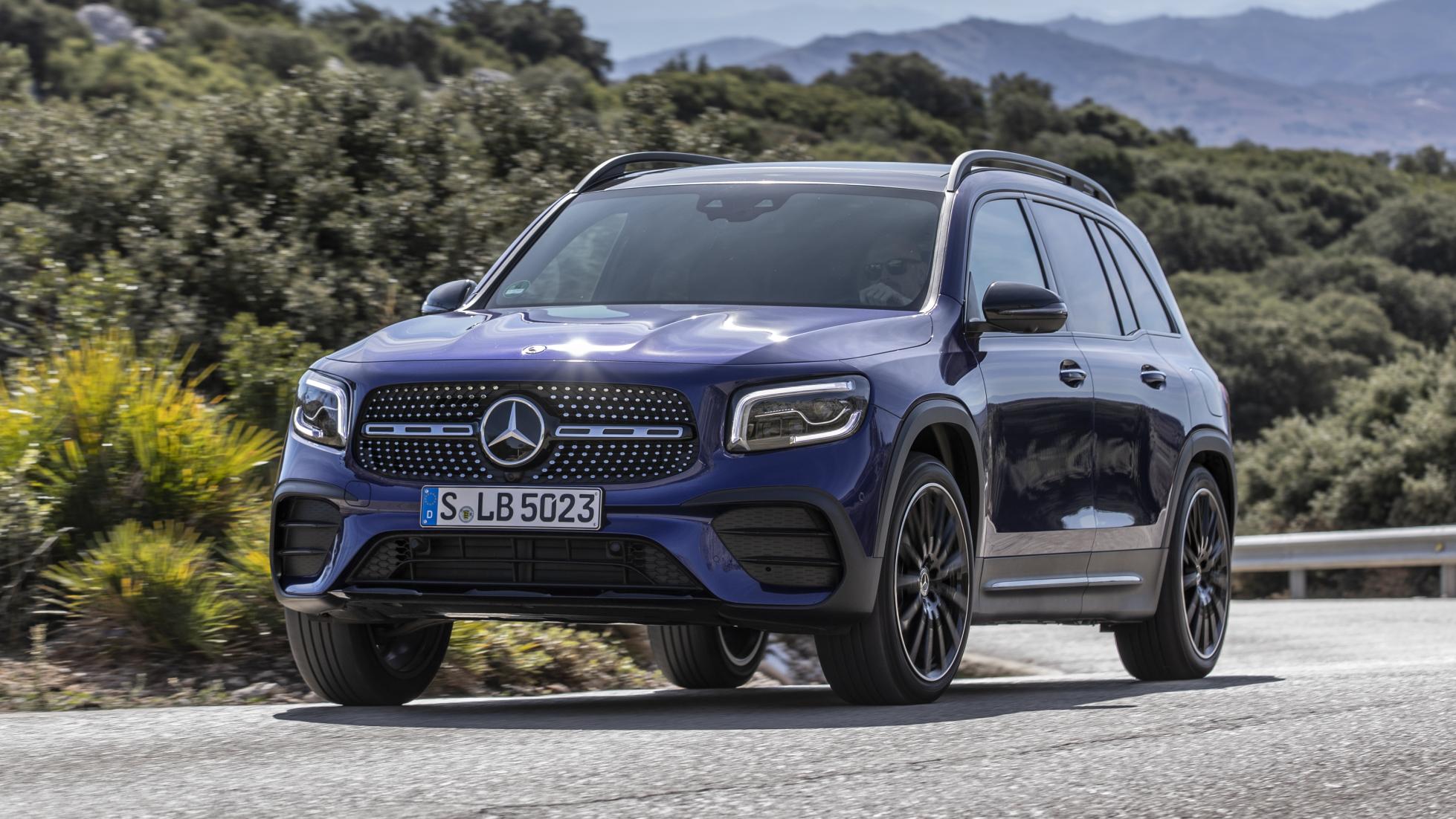
AMG Line Premium is probably the one to aim for – for £3,000 over and above AMG Line (which is £1,500 more than Sport) it adds the widescreen infotainment system (with Apple CarPlay/Android Auto), ambient lighting, wireless phone charging and a better stereo among other things. Another £3,000 buys you AMG Line Premium Plus, giving you adaptive LED headlights, a panoramic sunroof, a load more driver assistance systems and memory seats. All-wheel drive is a £1,600 option on the 200d, and standard on the 220d.
Everything gets seven-seats, though curiously if you go for the all-wheel drive 220d AMG Line Premium, likely to be the most popular model in the UK, you can save yourself £750 and get marginally more boot space by sticking with five.
We are not sure why you would do this. With seven seats it costs £42,950. Prices and specs haven’t yet been released for the GLB35.
Far as running costs go, the entry-level petrol manages between 7.0 and 7.8 litres/100km and 134g/km of CO2. The 200d claims between 5.5 and 6.1 litres/100km, with CO2 emissions from 126g/km (all-wheel drive marginally decreases fuel economy and increases CO2 emissions), while the 220d claims between 5.8 and 6.4 litres/100km and emits 135g/km of CO2. BIK rates range between 30 and 33 per cent, meaning all regular GLBs pay the same £210 RFL.
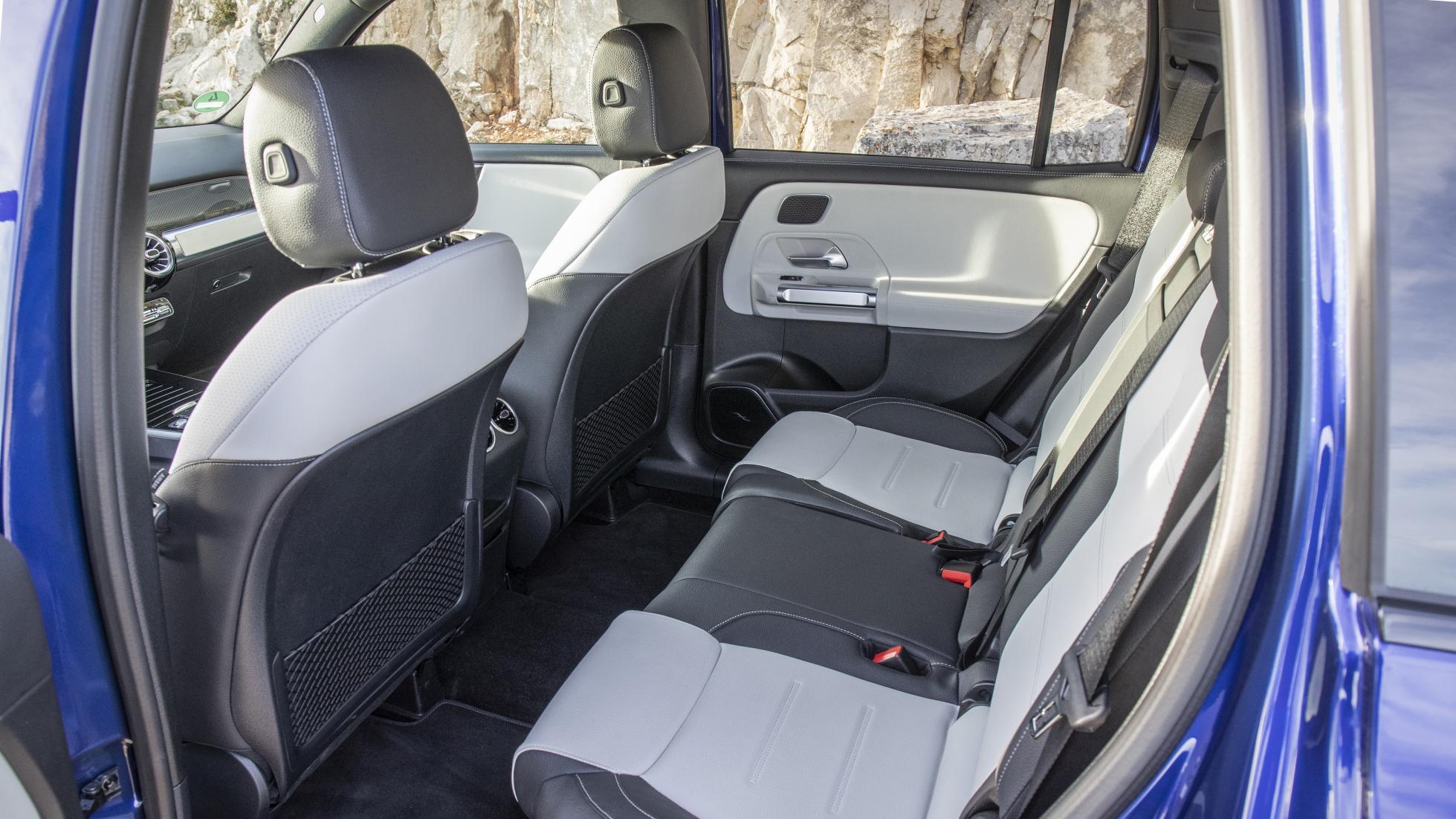
VERDICT
Sensible money buys a Skoda Kodiaq. It’s what we’d do – and you can get a bloody good one for the £34,200 you’d pay for an entry-level GLB. But of course the three-pointed star is worth substantially more than its weight in gold. That said, the GLB doesn’t rely solely on its badge – it has been well thought through, with a reasonably versatile, appealingly techy interior and good road manners. We like it more than we thought we would, given some other cars on this platform haven’t exactly impressed us.
The GLB is certainly worth thinking about if you’re looking at a Disco Sport, providing the standard suspension (which we haven’t sampled) doesn’t totally knacker the ride quality. Keep your eyes open for the twin test.
Not a bad effort from Mercedes. Will do very well, even if the Disco Sport is more likeable and Kodiaq more practical
| FOR | AGAINST |
| Spacious and versatile given its relatively compact dimensions, comfortable (maybe), quiet and relaxing | There are cheaper, more practical options. Interior materials aren't great |
| SCORE | 7/10 |








